The Setouchi Triennale art festival has taken place on the islands of the Seto Inland Sea every three years since 2010. Now, in 2025, the sixth Setouchi Triennale is well underway, with visitors from across Japan and beyond arriving to admire site-specific artworks executed with the assistance of local residents. The power of art emplaced in nature is helping to drive regional revitalization in and around Japan’s largest inland sea.
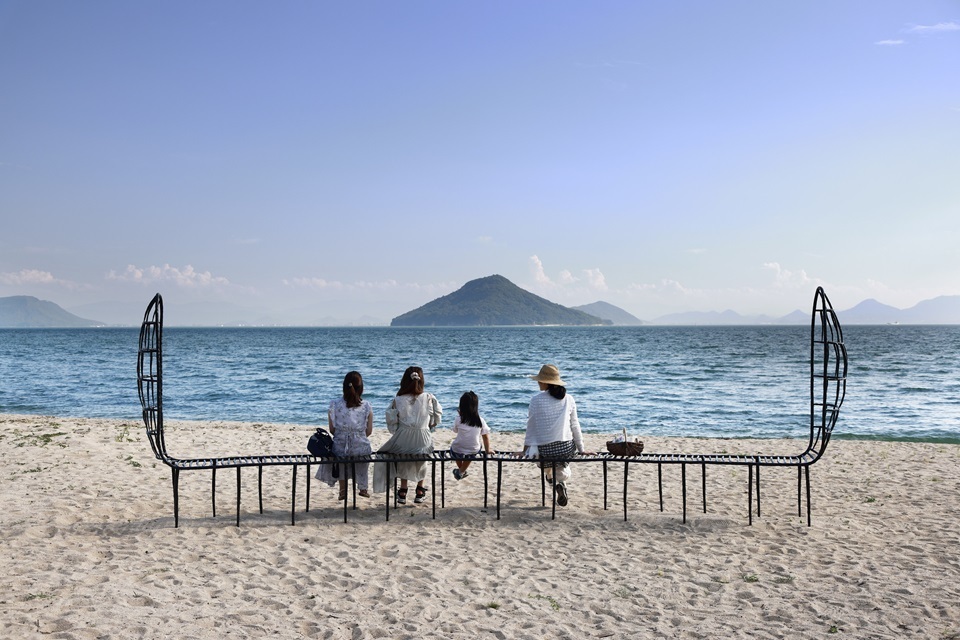
An artwork installed on Teshima Island in 2022 by a leading Australian artist and architect team. Many who visit the beach to enjoy the view take a seat here and let their thoughts drift toward sea and sky.
Heather B. Swann + Nonda Katsalidis, Place for Sea Dreamers. Photo: Keizo Kioku
Bordered by the islands of Honshu, Shikoku, and Kyushu, the Seto Inland Sea is the largest inland sea in Japan. Its mild waters are home to more than 700 islands, large and small, and its natural beauty makes it a regular entry on travel magazine “must-visit” lists.
Every three years, this rich seascape plays host to a contemporary art festival, the Setouchi Triennale. In 2025, the festival’s Spring, Summer, and Autumn sessions will cover about 100 days in total, with 222 artists and groups from 37 countries participating and 255 works of art—the largest number so far—on display at 17 locations scattered across the islands.
The most-visited Setouchi Triennale to date is the 2019 festival, which attracted 1.18 million visitors, roughly a quarter of them from outside Japan. This year, the expected synergy between the Setouchi Triennale and Expo 2025 Osaka, Kansai, Japan, has led to new bus routes connecting the venues and plans for regional tours, all of which should deliver a significant economic boost to the area.
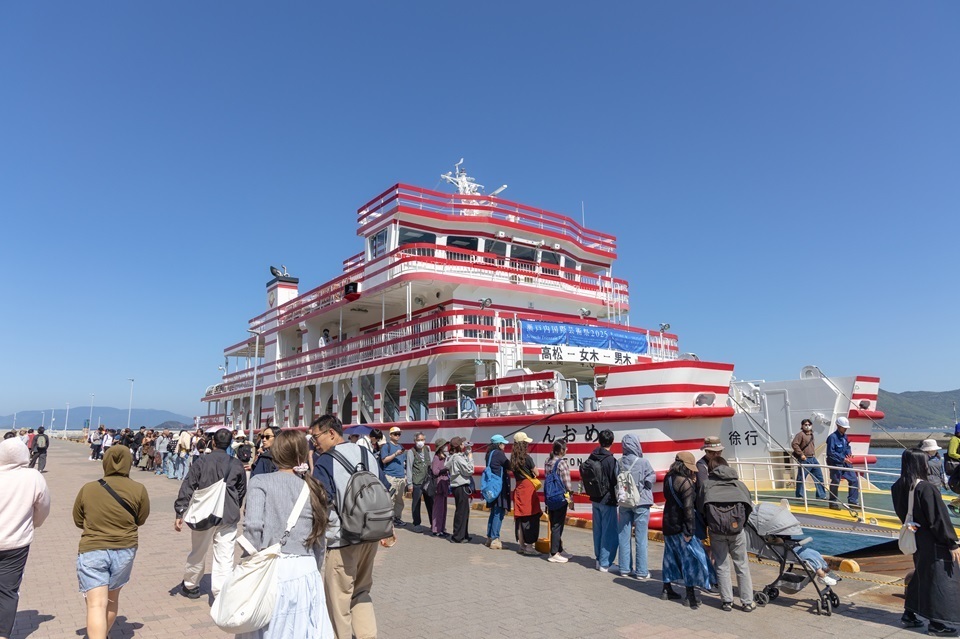
Many people come from inside and outside Japan to see the artworks installed on the islands, making the Setouchi Triennale a valuable opportunity to promote the region’s charms. Photo: Shintaro Miyawaki
There are several art festivals around the world that make an entire city their venue, like La Biennale di Venezia in Italy and documenta in Kassel, Germany, but festivals staged in depopulating regions, as the Setouchi Triennale is, are a phenomenon unique to Japan.
“The Setouchi Triennale is rooted in a desire to revive, through the power of art, the fulfilling lifestyles that people once led here in coexistence with the sea,” says art director KITAGAWA Fram, who is the festival’s general director. “That’s why its overall theme is ‘Restoration of the Sea.’”
In earlier centuries, the Seto Inland Sea thrived as a hub of trade and communication connecting Japan with continental China, the Korean Peninsula, and Southeast Asia. But as Japan modernized and people thronged to its larger cities, the island population grew older and the region began to lose its vitality. The sea also bore many of modernization’s negative legacies, including pollution and environmental damage.
Artists participating in the Setouchi Triennale actually take up residence in places sharing this background, drawing on local history, nature, and culture to create site-specific art with the cooperation of residents.
“At first, some of the residents opposed the idea of bringing artists in,” says Kitagawa. “But once work on the art began, it looked like so much fun that they ended up helping out.” The 2025 Setouchi Triennale, like its predecessors, features numerous works rooted in elements of local life and completed with the help of area residents, from pieces celebrating the glove industry of Higashi Kagawa to others inspired by fishing nets as a symbol of island fishing crews. The assistance provided by people in the community is simultaneously a reaffirmation of their regional identity.
“It was the Setouchi Triennale that decided to enhance the existing appeal of the region by embedding the artworks in natural environments instead of sealing them away inside museums,” says Kitagawa. “When visitors travel from island to island to see various works, they’re also encountering the region’s many charms. The festival is a space for experiences that cannot be had anywhere else, and certainly not via smartphone.”
Over the medium to long term, the festival has led to concrete examples of revitalization in the Setouchi region. Immigration to Ogijima Island is one. In 2014, Ogijima’s population was around 150; since then, over 60 people have moved there, and many more are eager for the same opportunity. The elementary school and child care center that previously shut down have been reopened.
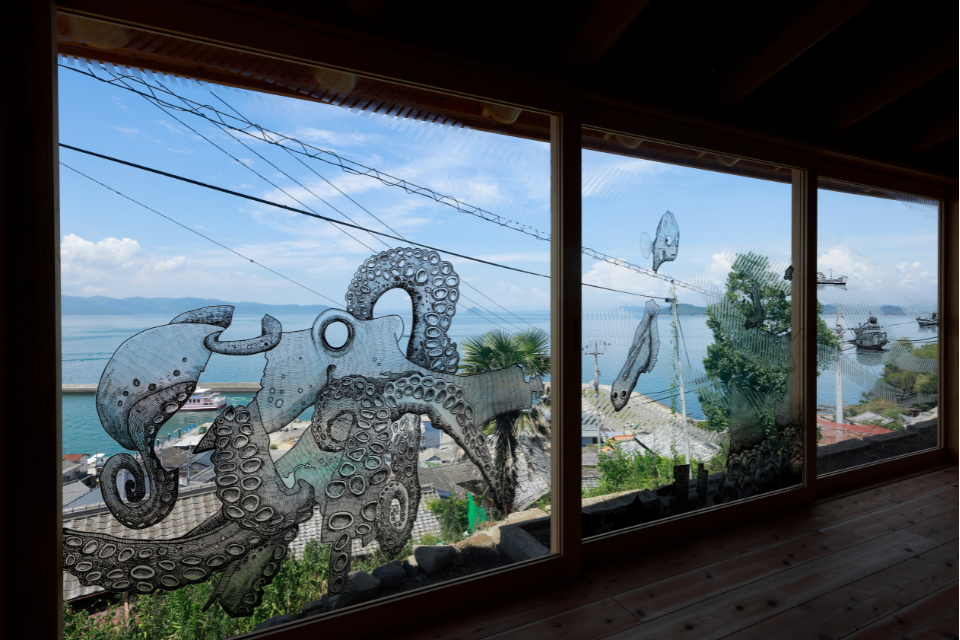
The Ogijima Pavilion by architect BAN Shigeru and artist Oscar Oiwa is distinctive for the fantastical world painted on its windows and thus superimposed on the view from within. It has been a feature of the site since 2022—a demonstration of the way that past works remain in place so that the region also functions as a kind of archive for the Setouchi Triennale. Oscar Oiwa, Ban Shigeru, Ogijima Pavilion. Photo: Keizo Kioku
Another major feature of the Setouchi Triennale is the group of volunteer supporters known as the Koebi-tai or “Little Shrimp Squad.” They help out with constructing facilities, manning reception desks, and sometimes creating artworks. There were around 50,000 sign-ups for the Koebi-tai between 2010 and May 31, 2025, and some 20% of those were not Japanese citizens. Volunteers could be called the “lubricant” that helps maintain cordial relations among local residents, artists, and visitors.
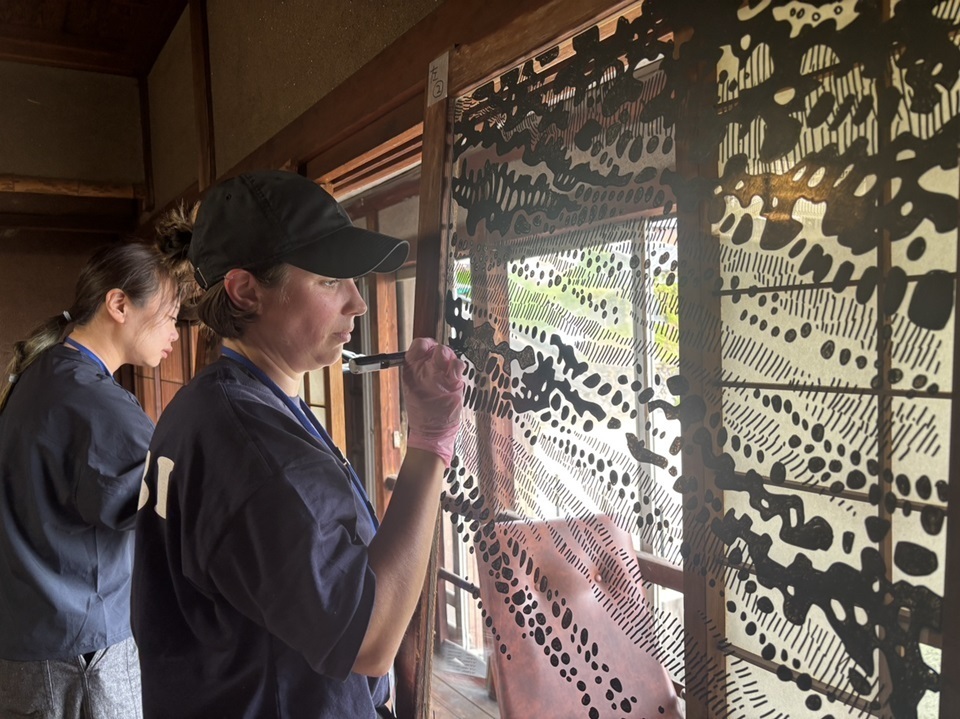
A French volunteer supporter helps with the creation of a work by artist Oscar Oiwa on Ogijima. During breaks, she says, she and the artist chatted about art and life.
“Being able to visit a different island every day as a volunteer was a wonderful experience,” says one French woman in her thirties who joined the Koebi-tai for the Spring session. “In my homeland, I don’t go to museums very much, but at this festival, I can melt into the natural environment and form connections with the art and the local people as I experience the region, so it never gets boring. While volunteering on Oshima Island, I learned for the first time about the island’s history, which shook me to the core. You couldn’t have that kind of experience in a museum.”
The Setouchi Triennale goes beyond narrow notions of simply “admiring” art to serve as a catalyst for real change in the region. It also provides an opportunity for residents to rediscover the appeal of their home islands, and to not only bring in visitors from across Japan and around the world but also to grow the region’s “related population” of people who will come back to visit again.
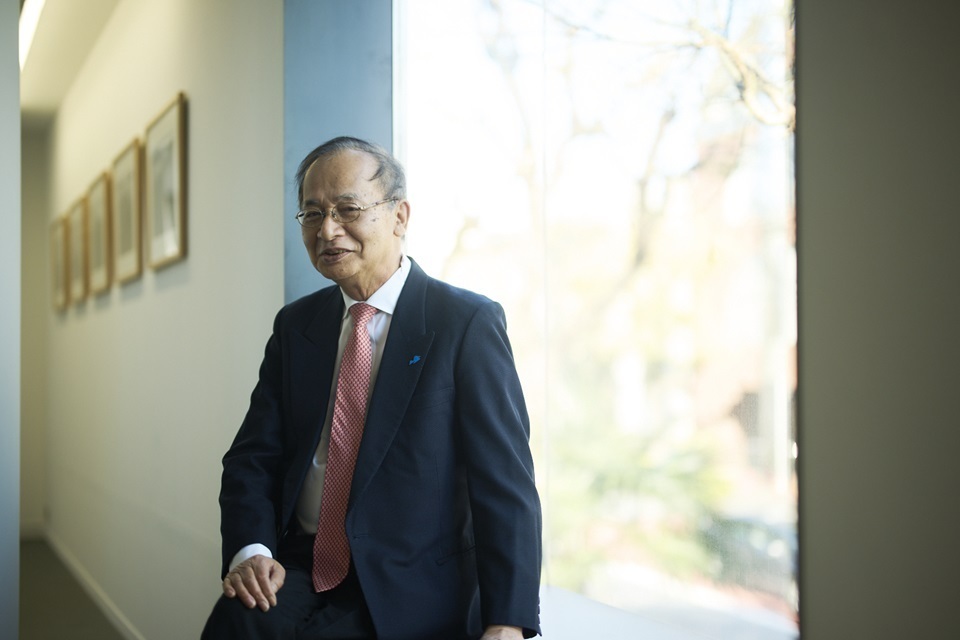
Setouchi Triennale general director KITAGAWA Fram is also general director of the Echigo-Tsumari Art Triennale, held in Tokamachi and Tsunan in Niigata Prefecture.






























